The reason Australian men don’t buy more jewellery seems simple enough: they don’t put the same value on jewellery that women do.
Jewellery represents values that marketers traditionally say men just don’t respond to – it’s not functional or efficient, it doesn’t eliminate a negative issue or solve a problem and it’s perceived as feminine – but that’s not the case for all men.
Men’s jewellery is a small market and it may never reach the scale of the women’s sector, yet it shouldn’t be ignored, according to David Paterson, managing director Paterson Fine Jewellery, which manufactures men’s ring and cufflink range Alfie Black.
“Absolutely it’s still a growing trend in the jewellery industry,” he says.
Phil Edwards agrees, the managing director of Thomas Sabo distributor Duraflex Group Australia noting, “For some men, jewellery is a very important fashion statement and form of personal expression.”
For the more conservative males, purchasing fashion jewellery is usually out of the question but these consumers may be tempted by the simple luxury of a beautiful wedding ring, even if they rarely wear it.
Indeed, there are ways to overcome the resistance men have for buying pieces of their own: creating spaces that appeal specifically to men, tailoring sales techniques to the different types of men who buy jewellery and developing a product offering that combines timeless favourites with the latest trends.
Chris Scanlan is manager of RJ Scanlan & Co, which distributes Dora men’s wedding rings. “It comes back to demographics,” he explains of selling to men.
“There are a lot of different types of men around the country, different people out there buying things for different reasons. There’s also different retailers promoting different types of products, and there’s the online component too.”
Know your man
The key to selling jewellery to men is to consider how they perceive it. The men’s market can generally be divided into three categories: those that are open to jewellery on their own terms, those that embrace heritage jewellery pieces and those that do not consider buying jewellery at all.
“It really depends on the man,” says Darren Roberts, director of Cudworth Enterprises. “Bracelets can be part of accessorising. Cufflinks can make a statement – especially designer brands. Men are relaxed wearing jewellery, as long as it remains masculine.”
For the first group, it’s important to differentiate men’s jewellery from women’s. Marketing it as a fashion accessory and focusing on masculine design are both central to courting this segment.
To these men, the accessory – be it a ring, pendant or cuff bracelet – is part of a particular outfit, rather than something to be worn constantly like a wedding ring.
These customers will buy different pendants for the same chain or rings with different finishes for each look.
The Thomas Sabo men’s collection Rebel at Heart speaks to this type of man by using a palette of silver, black and turquoise to create a masculine feel, as well as tough materials like leather and blackened silver. The design motifs present as a rock’n’roll take on religious iconography and wild animal themes.
Pendants can be bought separately from the chain to create a custom look, appealing to a male consumer’s sense of control and individuality.
John Rose, managing director of West End Collection, which distributes Paul Hewitt, says, “We find that men’s jewellery sells very well alongside our watch brands. They are designed to complement the design of the watches and enhance the look of the watch itself when worn alongside each other.
“The ‘stacked’ look is very on trend right now and is a great up-sell for any retailer.”
He adds that the Paul Hewitt range uses nautical symbols like the anchor and shackle, which appeals to men while calling back to the brand’s northern German heritage.
Mark Boldiston, director of men’s jewellery boutique Lord Coconut in Melbourne, caters to this market too.
“The guys who enter my store love the purchase process,” he says. “It probably helps that I’m up on level five so they’ve already made the commitment to come into the store and, nine times out of 10, they’ve already looked at the range online. They’ve come to make a decision.”
Items stocked in the store have unique, masculine design elements like uneven, jagged edges, fingerprints and cratering, as well as motifs like skulls, grenades, knives and hands.
Social media remains the major purchasing influence on these men, who tend to be younger – either Millennials or Gen Z. Influencers, overseas trends and the personal style of stars like entertainer Jaden Smith, singer Harry Styles and model and jewellery designer Anwar Hadid inspire them.
Gen Z in particular is less-rigidly bound to gender roles and shopping habits. A recent Ipsos MORI survey found that Gen Z are far less likely than any other generation to want “gendered clothes, shoes, sports goods, perfume and deodorant”.
Though it is considered a men’s range, Edwards reveals that Thomas Sabo’s Rebel at Heart is nearly as popular with female consumers as it is with men. “I feel all men’s jewellery may be considered unisex and this has not really changed over the recent years,” he says.
Boldiston too has seen a narrowing in the gender divide.
“Although we sell ourselves as being a men’s jewellery store – so any guy who comes into the store has the confidence to know everything in stock is made for blokes – there is no denying that everything in the shop is in fact unisex,” he says.
“As gender boundaries are getting closer and closer together, there is a huge market for unisex jewellery.”
For Roberts, it comes down to the individual. “Some of our pieces can be worn by both men and women – it’s a personal choice.”
Rose agrees: “There is a large section of the jewellery mix that can be worn by men and women. Paul Hewitt’s Phreps bracelets are certainly designed to be worn by both sexes.”
When it comes to the men’s jewellery market, however, the generational gap is clear. “For younger generations [jewellery is] more of a fashion accessory,” Paterson explains. “I think for many older men it’s a heritage piece that has significant meaning to them.”
Alfie Black plays into this sense of history and heritage with its collection of signet rings and cufflinks inspired by classic British design. Paterson notes that engravable, flattop signet rings are proving very popular.
Boldiston has also seen significant growth in the signet-ring market. “These allow people to have something a bit more individual that matches their personality or the look and style they are trying to achieve,” he explains.
On the other hand, Scanlan has noticed a significant number of men of all ages trending back towards a more conservative outlook on jewellery. “There’s been a shift to plainer, more-conservative wedding bands in straight colours like white or yellow gold. Guys are toning down the rings that they’re wearing,” he says.
Scanlan believes the most marked divide is not age but geography, existing between urban and regional consumers.
“You’ve got men who live in metropolitan, urban areas who are likely to be spending a little bit more on their rings and spending on rings that have flashy design, look a little different and are more individual and customised,” he explains.
“Whereas there are guys on the complete other side of the coin that are coming from, say, regional areas, where at times it’s a battle to get him to wear a ring – or perhaps he can’t wear a ring at work for safety reasons. He wants to potentially just buy something simple and hardwearing. You’ve really got to know your market when choosing stock because there’s a lot of factors in play.”
Rachel Vellacott, director of Jamies Jewellers in Central Otago and Queenstown, New Zealand, agrees: “In our area, a large number of guys aren’t into jewellery; they want a work watch and their wives force them to wear a wedding band and that’s it!”
Room for improvement
When it comes to selling to men, simplicity is key.
“The retail space has to make men feel comfortable spending time in your store; nothing too fancy, definitely little or no bling and not too bright,” Boldiston says.
“The store has to be welcoming but staff have to know how to read the guy as soon as he walks in the store and either offer assistance or to leave him alone – he will ask if he needs help.”
Boldiston’s boutique Lord Coconut has a “19th-century, natural history look and feel” that’s welcoming but interesting enough that even men who mistakenly walk in will stay to admire the fit-out, rather than “racing out and feeling like a fool”.
For retailers targeting a mixed clientele with mostly female customers, it’s still important to ensure the men’s section is discrete and has the right ambience.
“The men’s jewellery line should be a separate category within a store or brand collection,” Edwards advises.
Vellacott confirms that Jamies Jewellers stores have a separate section for the men’s range, featuring “a nice range of items including rings, bracelets, pendants, pocket watches, cufflinks, tie slides and bangles”.
The same principle applies to e-commerce. Some brands such as Thomas Sabo have separate social-media channels for their men’s collection. These channels link to specific men’s sections of a retail website.
Marketing materials and displays specific to the men’s market can also work well if a retailer is stocking branded men’s jewellery; however, Vellacott notes that online shoppers are still mostly women.
“Our online men’s jewellery sales tend to be women buying for their men!”
Retailers should consider offering gifting options and styling tips as part of the men’s section of their websites, giving customers an idea of exactly how a piece should be worn and if it will fit with the personal style of the man who will wear it.
According to market research firm NPD Group, rings are by far the largest jewellery category for men, generating a third of jewellery sales. This means they should be a major focus of the retail display.
RJ Scanlan & Co introduced carbon fibre rings nearly two years ago after noticing their popularity in Europe. The combination of a textured black surface with yellow gold and even rose gold has proved a hit with consumers.
“We’ve been surprised by the popularity of rose gold with carbon fibre and I think that just comes down to the contrast of the rose gold with the black – it’s a nice look that’s been our best colour combination,” Scanlan says. “I know other suppliers have other black materials – things like zirconium and zirconium with rose gold have been popular for them.”
Vellacott agrees, saying, “For wedding bands, we’ve noticed a definite trend for black zirconium and more modern-looking rings.”
Meanwhile, Boldiston says the average width of wedding rings is narrowing from 7mm two years ago to 5mm and even 3mm today. Retailers should carry a range of widths as well as sizes.
Other popular ring trends are industrial-style metals like tungsten and titanium. While Scanlan notes that these rings have brought the average price of wedding bands down, there’s no denying their popularity.
“If you Google men’s wedding bands, one of the first things you see is a tungsten ring or a black ring,” he says. “These cheaper, alternative metals are flooding that sphere. That’s creating an expectation with men and they like what they’re seeing.”
“Many consumers are sold on the appearance and the maintenance aspect; they’re hard and black and strong. Men like the price but it’s about those other selling points,” he adds.
Finally, when it comes to closing a men’s jewellery sale, Boldiston advises streamlining the process.
“We try to make the purchase straightforward, such as having a fixed price on our gold rings. Uncertainty leads to them feeling not in control; we like to keep it simple,” he says.
Indeed, for the whole of the men’s jewellery market, “keep it simple” seems to be the best advice of all.
MEN'S FASHION JEWELLERY
 | 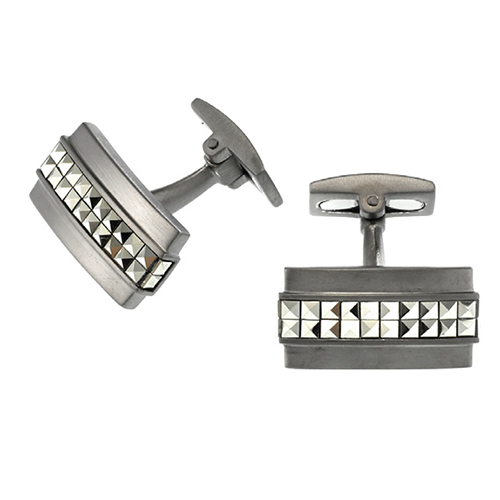 | 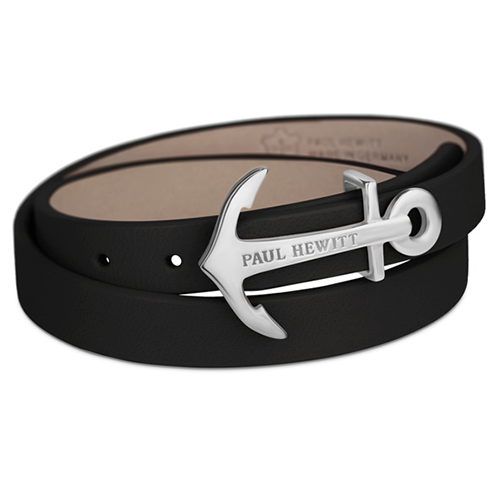 |
Above: West End Collection | Above: Cudworth | Above: West End Collection |
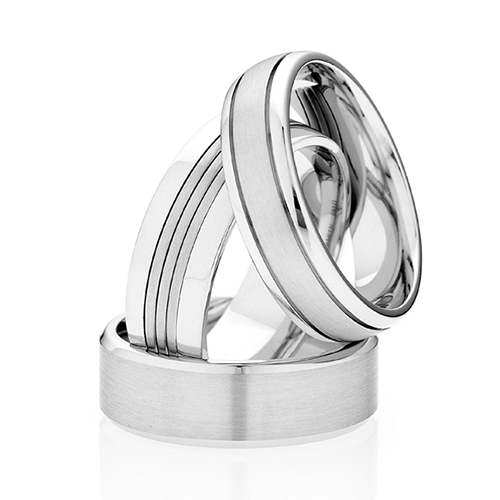 | 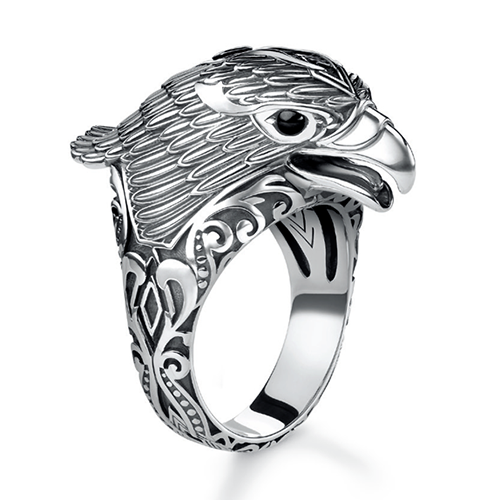 | 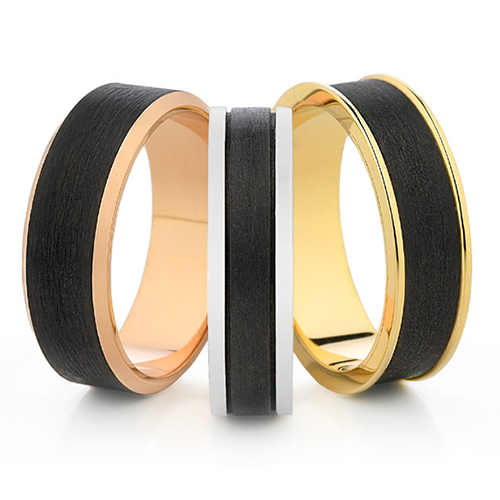 |
Above: RJ Scanlan & Co | Above: Duraflex | Above: RJ Scanlan & Co |
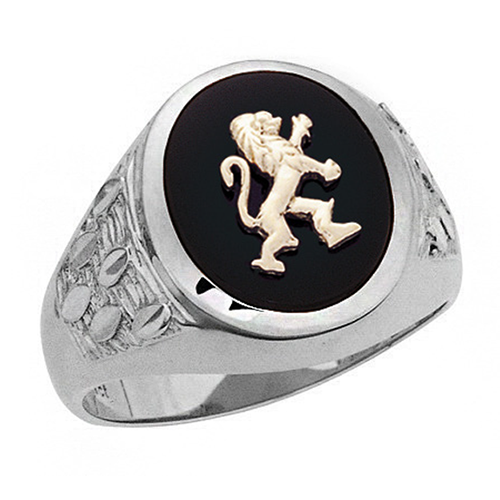 | 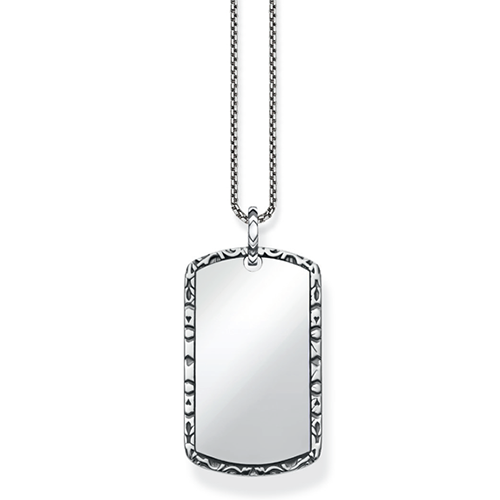 | 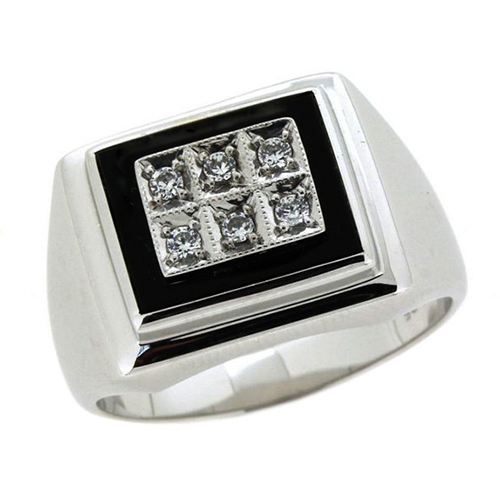 |
Above: Paterson Fine Jewellery | Above: Duraflex | Above: Paterson Fine Jewellery |